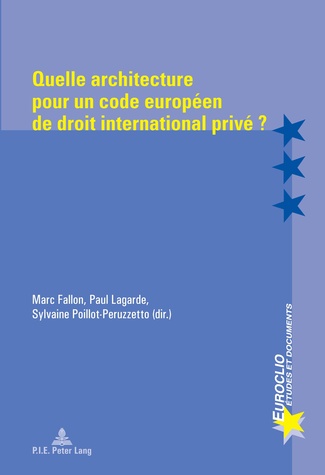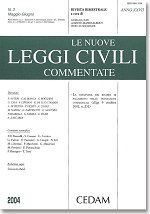Our colleague Dr. Mireille van Eechoud, currently of double affiliation as an Associate Professor at the Institute for Information Law, Universiteit van Amsterdam and a Visiting Scholar at the University of Cambridge Centre for Intellectual Property and Information Law, was kind to share with us her views on the Painer case (Case C-145/10) and its relation to the preceding EU Court of Justice case law on the matter. Here is her full opinion:
Could the CJEU’s new stance on art. 6(1) Brussels Regulation 44/2001 be explained by the fact that the Court is very activist of late in shaping areas of copyright law which were not considered harmonized – of which the Painer case is itself an example? Or has the Court taken to heart the criticism unleashed by its Roche judgment on multiple defendants jurisdiction? The Advocate General certainly seemed to, citing among others the position of the European Max Planck Group on Conflict of Laws in Intellectual Property (CLIP). Whatever the reason, the Painer judgment from 1 December 2011 (Case C-145/10) signals a departure from the strict formalist-territorial approach to jurisdiction in intellectual property matters. The Court says that joining defendants under art. 6(1) Brussels Regulation is not precluded ‘solely because actions against several defendants for substantially identical copyright infringements are brought on national legal grounds which vary according to the Member States concerned’.
In the case at hand, a freelance photographer from Austria claimed infringement of her copyright in portrait photos. She had made a series of portrait photos of a 6 year old girl at a nursery. The girl was later abducted and spent 8 unspeakably horrible years in captivity. The photographer gave prints of the portrait photos to the parents and police. Some of them were subsequently released by Austrian authorities in the context of the search. The girl’s eventual escape was a major news item across Europe. Lacking current photos, the defendant newspapers published the old portrait photos. The photographer had not been asked for permission, nor credited.
The photographer brought various actions in Austrian courts. In these disputes the question whether there was copyright in the photos, or some other right, and what the scope of such protection is under German and Austrian law was hotly debated. The proceedings which led to a preliminary reference were against five newspapers: one established in Austria, the other four in Germany. The Austrian newspaper was only distributed in Austria; the German newspapers had primary distribution in Germany with additional distribution in Austria.
So could the Austrian court assume jurisdiction for the infringements in Germany and Austria, with the Austrian newspaper as anchor-defendant under article 6 Brussels Regulation? The provision allows a plaintiff to consolidate actions against different defendants resident in the EU in one domestic court, ‘provided the claims are so closely connected that it is expedient to hear and determine them together to avoid the risk of irreconcilable judgments resulting from separate proceedings’. Previously, in the much criticized case C-539/03 – Roche Nederland v. Primus, the Court ruled that a close connection requires a same situation of law and of fact. When claims concern the infringement of territorially distinct patent rights (as granted under the European Patent Convention), for that reason alone there can be no risk of irreconcilable judgments because there is no ‘same situation of law’.
In Painer, the Court seems to abandon that reading. The fact that the claims against the defendants concern infringement of the territorially distinct copyrights for Germany and Austria does not of itself preclude the possibility of consolidating them on the basis of article 6 Brussels Regulation. This is the more so, the Court adds, if the applicable laws in question are very similar. The referring Austrian court had concluded that was the case: German and Austrian copyright and related rights law share essentially the regimes for photographs (which is partly due to EU harmonization).
Oddly enough, and unlike the Advocate General, the Court does not refer to its Roche judgment. Rather, it builds its reasoning primarily on Freeport (case C 98/06). There the Court stated that the fact that claims against defendants have different legal bases (e.g. in contract and tort) does not preclude application of art. 6 per se. The more obvious parallel in intellectual property matters isof course in situations where say the claim against one defendant is based in copyright infringement, and the claim against the co-defendant in contract (breach of a distribution agreement for example). I am not so sure that Freeport is easily applied to cases where infringement of copyright in different countries is at stake.
In Roche, A European Patent had been granted through the European Patent Office, which resulted in a bundle of patents for the plaintiff, each equivalent to a national patent for each of the countries applied for. The subsistence and scope of these national patents is very similar across European Patent Convention states. The criticism of (among others) CLIP is that in cases where national intellectual property rights have been unified or harmonized to a great degree, it is artificial to bar a plaintiff from joining claims merely because formally speaking different territorial rights are involved (see the CLIP position).
The defendants in Roche were all part of the same parent company, and basically sold the same allegedly infringing products in their respective local markets. Yet because each defendant acted locally (albeit under the direction of the parent), allegedly infringing the local patent, the Court did not accept there was a same situation of law and fact. In Painer, it is not clear whether there is any connection between the defendants. They may have acted similarly from the perspective of the plaintiff: each published photographs she made, over a similar period and as illustration of news about roughly the same matter. But I don’t see how that qualifies as a ‘same situation of fact’ for art. 6 purposes. Surely, the fact that persons behave in similar ways with respect to a (potentially) copyrighted image does not make the claims closely connected?
The answer to that question is in the Court’s observation that ‘It is, in addition, for the referring court to assess, in the light of all the elements of the case, whether there is a connection between the different claims brought before it, that is to say a risk of irreconcilable judgments if those claims were determined separately. For that purpose, the fact that defendants against whom a copyright holder alleges substantially identical infringements of his copyright did or did not act independently may be relevant [my italics].’ I would argue that whether or not the co-defendants acted independently is in cases like these not a potentially relevant factor, but a crucial factor. If not, in this case our Austrian photographer could sue before Austrian courts any of the German publishers for distributing newspapers with the photos in Germany, because a completely different unrelated paper based in Austria happened to have printed the same photo. There has to be some relationship between the defendants, or at least between the anchor-defendant and the co-defendants. If not, all that is left is the foreseeability escape the Court articulated in Freeport.




